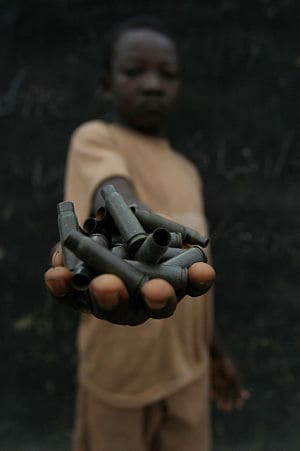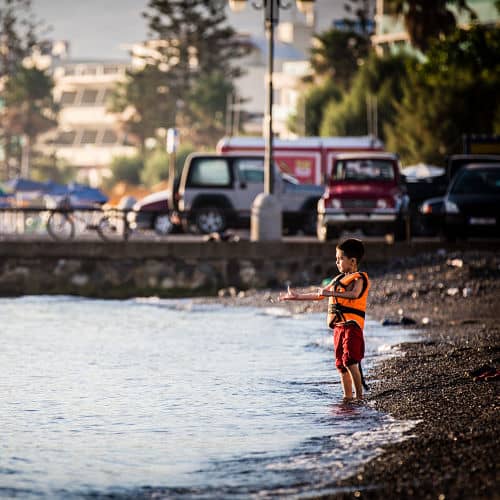Child Migration and Human Rights in a Global Age makes for a sobering reflection when read against the backdrop of recent global media stories about child and adult migrants dying in the Mediterranean (not to mention the US-Mexico border and recent stories from Australia) and European borderlands, the treatment of Indigenous Canadian children as the truth and reconciliation commission comes to a close there, and likewise in Australia, as reparation claims by members of the Stolen Generations begin to accelerate. Indeed, I could go on with multiple examples of child exploitation – the histories of Catholic institutional abuse in Ireland, the use of child soldiers in conflict zones (in particular on the African continent), the widespread trafficking of children for sexual abuse and prostitution across the globe.
Whatever the nature and means of exploitation, historical or contemporary, one issue lingers after reading this particular book: that we adults – whether living in poverty stricken contexts or affluent middle class homes – fail the world’s children ceaselessly and relentlessly.

Divided into a tripartite structure, the book shifts between providing interesting case study examples and thoughtful discussions of the various legal instruments and policies (both national and international) with which migration is ‘managed’.
Part 1, The Right to Respect for Family Life? Moving Children for Family, offers three chapters that examine the complex challenges of family migration, child displacement, child citizenship, and the challenges of inter-country adoption. Part 2, Youthful Commodities: Moving Children for Exploitation, presents the emotionally complex cases of trafficked children and the use of children in war. Finally, Part 3, Demanding a Future: Child Migration for Survival, examines the rights of the child migrant in their unequal battle for refugee protection, and their need for a better life elsewhere. Each section maps (with sophistication) the intersections and trajectories from which child migration is borne.
Many of these arguments are anchored in the belief that poverty is the main progenitor of child migration, and Bhabha offers up many distressing stories of how child migrants find themselves separated from their families, abused, and exploited.
Further, as Bhabha points out throughout the text, many of these children’s families, wittingly and unwittingly, expose their children to the dangers of long term absence, trafficking, and abuse. Western states armed with international human rights instruments often do too little for these children, with, as Bhabha points out in Chapter 1, immigration law often being used to control religious and cultural diversity rather than ensuring the safety of the most vulnerable. Chapter 1 also offers an interesting comparative note on the different ways in which migration is managed in the EU versus the US. What figures large, however, in both contexts is the ideological distance between the best interests of the child and human rights law. Bhabha thus emphasises massive ambivalence in both the US and the EU on how the child migrant is treated, particularly with regards to refugee and citizenship protections (developed substantively in Chapter 2).
Compounding this are long waiting lists for family reunification visas, the challenges of deportation even for children with citizenship, and bureaucratic errors: the child migrant is thus confronted by a complex and painful ‘migration management’ landscape in which their rights are subordinated to their adult family members or mentors (see in particular Chapter 2). Their journey to safety, or a place that can be called home, is thus often derailed. In this first section of the book, Bhabha also engages the complex issue of inter-country adoption (see Chapter 3), an emotionally fraught issue with interesting links to issues of trafficking, exploitation and abuse. However, Bhabha does not fail to elucidate the goodwill of potential adoptive parents and the benefits of adoption to the very many children who are institutionalised (regardless of how they ended up in institutionalisation – Bhabha suggests many complex routes). What the discussion on inter-country adoption highlights most forcefully is the need for this issue to be viewed through the wider lens of other intersecting migration issues. Particularly compelling are the links between inter-country adoption and trafficking, as the case post the Haiti earthquake indicated when inter-country adoption was expedited, only to result in myriad controversies wherein Haitian children were removed by potential traffickers and child abusers.

Photo by hdptcar (flickr, CC BY-SA 2.0)
Chapter four brings us to the issue of trafficking, wherein Bhabha is careful to emphasise that in order to understand trafficking, we have to understand a number of other interconnected issues. While the number of trafficked children is rising, what is in question is how best to counter this issue, and Bhabha outlines the very distinct voices in this debate – anywhere on the spectrum from missionary zeal to save the children to rights-based action providing tangible solutions to the ongoing issue of trafficking. Whatever the debate, however, there can be no doubt that children are endangered every day in what is a brutal system of border crossing and exploitation. Thus, Bhabha argues, the single vector theory of understanding and attempting to resolve the issue of trafficking is failing and we must begin to understand the structural roots of trafficking as well as increasing awareness of the need to put in place protections (such as granting refugee status) for trafficked children rather than returning them to their home countries (from where they are often re-trafficked or sometimes even meet their deaths). Of urgency, then, is the need to address the limitations in the provision of protection to trafficked children on a global level, and further, educating at-risk children on the dangers of entering into any agreements with potential traffickers. Chapter five focuses on how at-risk children in conflict settings are used and manipulated as soldiers of war, with current estimates of over 300,000 children involved in armed conflict around the world (see in particular the case of Sierra Leone).
But what about the rights of all of these children? The book ends on a somewhat solemn note by unpacking the very many instances where child migrants have not been afforded any rights, in some cases being sent back to their home countries only to meet their death. Bhabha points out in the final two chapters that, in spite of an era which Louis Henkin (1990) called an “age of rights”, there is of yet no clear consensus on what exactly the rights of child migrants should be. Instead, child migrants are met with conflicting and contradictory approaches enshrined in different kinds of human rights and migration laws and policy.
In short, this book is a multifaceted gem offering scholarly thinking, practical legal expertise, and challenging case studies and stories of child migrants and their families.
The book is steadfast in offering important comparative material on child migration, and suggestions on pathways to improving the everyday life-worlds of our most vulnerable global citizens. It is, in sum, a book with heart, depth, and a broad range of appeal to anyone working within the realm of migration and human rights. Given the recent movement of Syrian asylum seekers into Europe, the global circulation of images of the death of a little Syrian boy on a beach in Turkey and the accompanying moral outcry over what is the humanitarian crisis of recent times, Bhabha’s book is crucial reading for anyone wanting to comment on this and other crises concerning child refugees and migrants.
References:
Henkin, Louis. 1990. The Age of Rights. Colombia: Colombia University Press.
Bhabha, Jacqueline. 2014. Child Migration and Human Rights in a Global Age. Princeton: Princeton University Press. 392 pp. Hc: $35.00. ISBN: 9780691143606.
**************
Featured image by IFRC (flickr, CC BY-NC-ND 2.0)
This post was first published on 12 October 2015.









